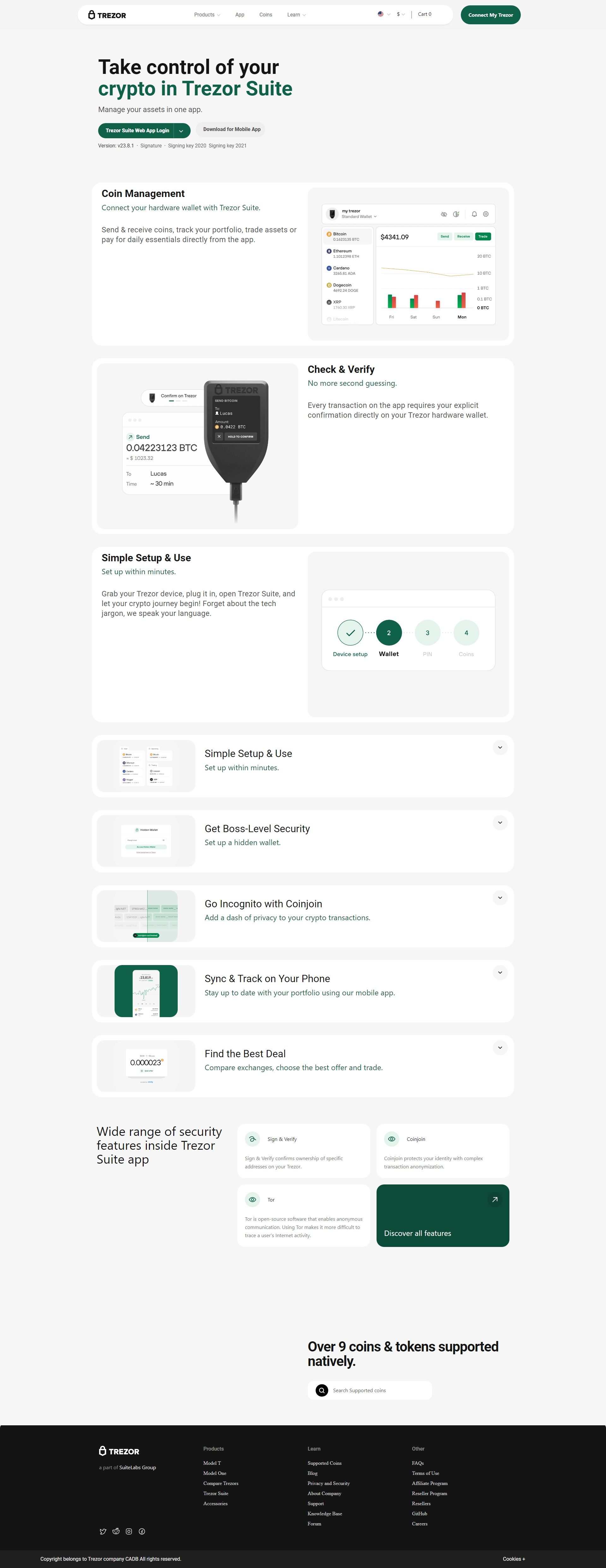Trezor Bridge: The Simple Connection to Your Crypto Security
In today’s fast-moving digital world, protecting your cryptocurrency is more important than ever. While hot wallets and browser extensions are common, they come with security risks. That’s where hardware wallets like Trezor shine—especially when paired with an essential tool: Trezor Bridge.
If you’ve never heard of Trezor Bridge before, don’t worry. This blog will explain it simply, step by step, so anyone—yes, even total beginners—can understand what it is and how to use it.
What Is Trezor Bridge?
Trezor Bridge is a small software program that connects your Trezor hardware wallet to your computer’s web browser. Think of it as a "middleman" that helps your browser talk to your Trezor device.
You can’t just plug in your Trezor and expect it to work instantly with Chrome, Firefox, or Edge. These browsers don’t automatically recognize your wallet. That’s where Trezor Bridge comes in—it creates a secure communication channel between your browser and your device.
It works quietly in the background and is essential for using Trezor Wallet (the web interface where you manage your crypto).
Why You Need Trezor Bridge
You might be wondering: “Do I really need to install another program?” The answer is yes—if you want your Trezor device to work properly with your computer.
Here’s why Trezor Bridge is important:
- ✅ Secure Communication: It ensures only trusted sources can connect to your Trezor.
- ✅ Better Compatibility: It’s designed to work across all major operating systems—Windows, macOS, and Linux.
- ✅ Smooth Experience: Without it, your Trezor device may not connect at all, or may behave unpredictably.
- ✅ Browser Support: It replaces older browser extensions and provides a more stable way to use your Trezor device.
How to Install Trezor Bridge (Step-by-Step)
Installing Trezor Bridge is very simple. Just follow these steps:
Step 1: Visit the Official Website
Go to trezor.io/start. This is the official page where you can safely download the software.
Step 2: Choose Your Device
Select your Trezor model (Trezor Model One or Trezor Model T) and click “Continue to Wallet.”
Step 3: Download Trezor Bridge
You’ll see a prompt to download Trezor Bridge. Pick your operating system (Windows, macOS, Linux) and click “Download.”
Step 4: Install the Software
Once the download is complete:
- On Windows: Open the
.exefile and follow the setup wizard. - On Mac: Open the
.dmgfile and drag the app to your Applications folder. - On Linux: Follow the provided terminal commands or download the
.tarfile.
Step 5: Restart Your Browser
After installing, close and reopen your browser. This allows the Bridge to activate and work properly.
That’s it—you’re done!
How Trezor Bridge Works Behind the Scenes
After installation, Trezor Bridge runs silently in the background. It listens for messages from your browser (e.g., "Send 0.5 BTC," or "Check wallet balance") and securely passes them to your Trezor device. You still have to physically approve every action on your hardware wallet—so nothing happens without your touch.
No one can access your Trezor or your private keys through Bridge alone. It's just a secure connector—not a risk.
Common Questions About Trezor Bridge
Q: Do I need Trezor Bridge if I use the Trezor Suite desktop app? A: No. If you use the Trezor Suite desktop app, it communicates directly with the device. Bridge is only needed if you're using Trezor Wallet in a web browser.
Q: Is it safe to install? A: Yes, as long as you download it from trezor.io. Never use third-party links.
Q: Will it slow down my computer? A: Not at all. Trezor Bridge is very lightweight and uses minimal resources.
Q: Do I need to update it? A: Occasionally, yes. You’ll get notified if a new version is needed for compatibility.
Conclusion
Trezor Bridge may sound technical at first, but it’s actually very simple. It’s the invisible helper that connects your Trezor hardware wallet to your web browser, making crypto management secure and smooth.
Whether you’re checking balances, sending coins, or interacting with apps, Trezor Bridge makes it all possible—safely and reliably.
So, if you're setting up your Trezor wallet today, don’t skip this important step. Install Trezor Bridge, and give your crypto the security it truly deserves.
Made in Typedream
